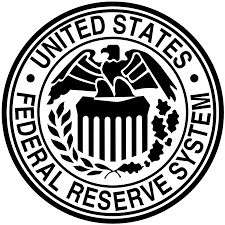Federal Reserve data shows $98 billion of deposits left the banking system in the week after the Silicon Valley Bank collapse. Most of the money went to money-market funds, as the Bloomberg data shows that assets in this class rose by $121 billion in the same period. The data shows the challenges of the banking system in the middle of a confidence crisis.

However, as many analysts point out, this is not necessarily the main factor that dictates the risk of a credit crunch. Deposit flight is certainly an important risk. Many regional banks will have to cut lending to families and businesses as deposits shrink, but in the United States bank loans are less than 19% of corporate credit according to the IMF, while in the euro area it is more than 80%. What will generate a credit crunch is the destruction of capital in the asset base of most lenders.
The slump in mark-to-market valuations of all asset classes from loans to investments is what will ultimately drive an inevitable credit contraction.
Credit standards have tightened significantly already, and the credit impulse of the economy, both in the US and euro area, has deteriorated rapidly, according to the respective Bloomberg indices. Both are below the March 2021 low.
We must remember that credit standards’ tightening was already a reality before the Silicon Valley Bank demise. But the reality check of capital destruction in the financial system’s asset base is far from done.
Start-ups will most likely see the most severe crunch in financing as the tech bubble burst adds to the asset base capital destruction in private equity and venture capital firms, who have delayed all they could the required write-downs and face a sobering reality check. Our internal estimate of capital destruction in the asset base of banks and private equity firms is between a 15% to 25% wipe-out, which is consistent with the average decline in market value over the October 2021- March 2023 period.
Real estate investments all over the US and Europe require a significant re-evaluation now that real estate has underperformed the market for eighteen months, according to Morgan Stanley. The optimistic valuations of real estate and corporate investments in banks’ balance sheets will require a significant analysis and subsequent write-off that leads to much tighter credit standards and stringent investment conditions.
Capital destruction tends to be forgotten in a world used to constant central bank easing, but it is likely to be the main source of strangling of credit to families and businesses as banks and private equity firms deal with the loss of value and weakening earnings and cash flow of investments made at elevated valuations and unreasonable prices. The main challenge this time is that capital destruction is happening in almost every part of the lenders’ asset base, from the allegedly low-risk part, sovereign bond portfolios, to the aggressively priced investments in volatile businesses and bull-market valuations of corporate and venture capital investments. The profitable asset part of banks will likely require important provisions for non-performing loans, a subject that was raised by the Federal Reserve and the ECB months before the banking crisis. Furthermore, as governments will blame the recent collapses on lack of regulation again, it is extremely likely that new rules will be imposed demanding banks to book large provisions recognising losses on the loan book ahead of time.
Even if we assume a modest impact on banks’ balance sheets, the combination of higher rates, declining optimism about the economy and the slump in equity, private investments and bond valuations is going to inevitably lead to a massive crunch in access to credit and financing. It is more than banks. The crunch will come from private direct middle market loans, a decline in high-yield bond demand, while institutional leveraged loans may fall as access to leverage is more expensive and challenging and investment grade bonds may likely continue to see strong demand but at higher costs. The question is not when there will be a credit crunch, but how large and for how long. Considering the size of the famous “bubble of everything “and its slow implosion, it may last for a couple of years even with a central bank pivot, because by now a reverse in monetary policy may only zombify the financial system.